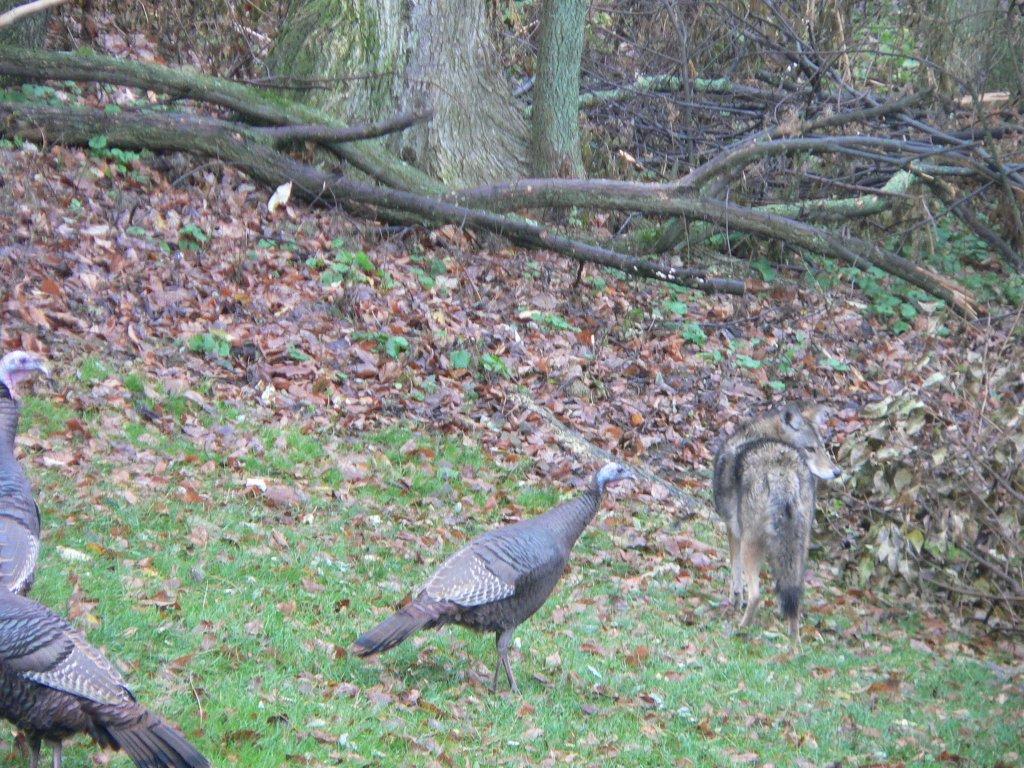Thanksgiving is here and the holiday season is officially upon us. There will be pumpkin pie and stuffing and shopping and turkey!
Yes, turkey is the highlight of the day…and potentially weeks after. Turkeys definitely draw the short end of the stick during the holidays. But sometimes eating turkey for dinner just isn’t worth the effort. It seems to be the case for this coyote.
This may seem a bit out of character. Why would a coyote be hanging with a bunch of turkeys? He should be the laughing stock of the coyote community. Be required to turn in his official “menace of society” card. Coyotes are stereotyped as being killing machines leaving nothing but death and destruction in their wake.
Research and data have shaped my opinion of coyotes, which does not jive with the stereotype. I admire coyotes for many reasons. Topping the list is their intelligence.
Taking advice from Kenny Rogers, predators need to know when to hold’em, fold’em, and most importantly when to walk away.
Merriam-Webster’s definition of a predator is “an organism that primarily obtains food by the killing and consuming other organisms.” What Merriam-Webster does not mention is that every trip to the grocery store for a predator does not result in a full grocery cart.
Predator hunting success rates vary. Wolves in Scandinavia were successful less than 50% of the time on a hunt. Wolves in Yellowstone were only successful 15-26% of the time depending on winter severity. Spotted hyenas were successful about 1/3 of the time. Merlins in Washington were successful in catching dunlins in 22% of attempts. African wild dogs were successful in filling their bellies about 51% of the time. Lions in Kruger National park were successful in about 30% of their attempts at obtaining groceries. Pennsylvania deer hunters are successful 34% of the time.
Yes, predators are not necessarily the killing machines they are made out to be.
There are many factors that contribute to hunting success. There are many times that predators don’t even attempt to capture prey because the odds are not in their favor. Sure, predators have big teeth and claws and are fast or stealthy. But prey can be very dangerous.
Wolves in Yellowstone prefer to hunt elk over bison even though bison are more abundant. Why? Because attacking a bison is very risky. If a wolf (or any predator) is injured during a hunt, he or she (unlike the prey) might not live to hunt another day.
But it’s just not risk of injury that can deter a hunting attempt. Handling time, environmental conditions, body condition of predator, pack size, herd/flock size, and odds of being successful all factor into the Go/No-go call on the part of the predator.
So why is our coyote hanging with these turkeys? Maybe he just wanted to celebrate the holidays with some friends. Sometimes success is measured by memories. Ask the 800,000+ hunters heading into the woods on Monday.
If you would like to receive email alerts of new blog posts, subscribe here.
And Follow us on Twitter @WTDresearch
